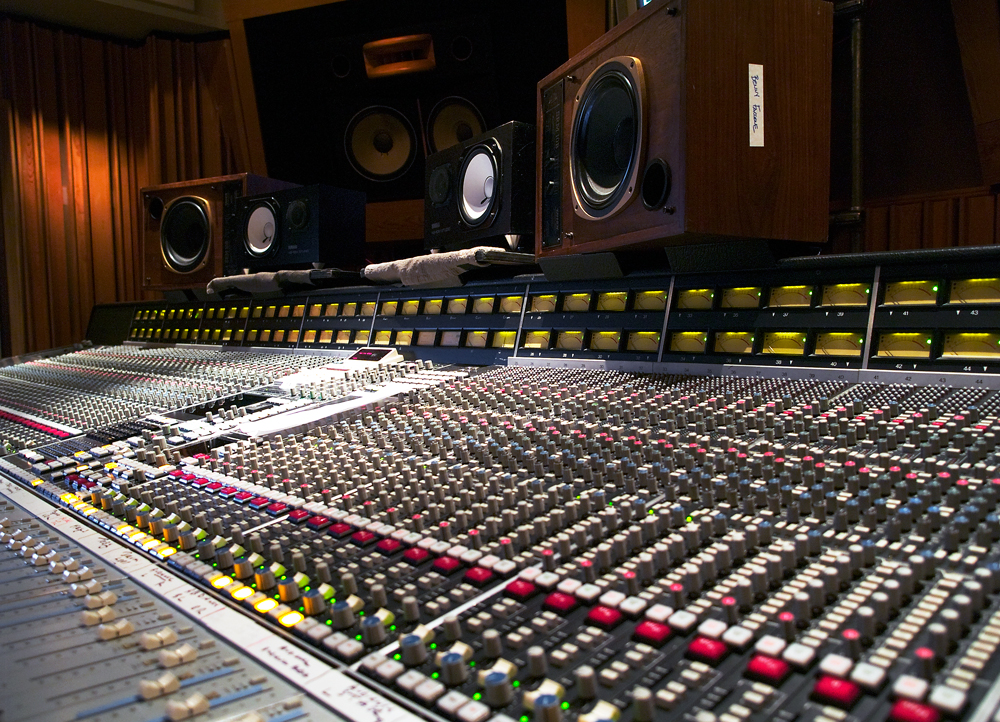Understanding signal flow is one of the most fundamental skills an engineer can have. Knowing your stuff can help you save a ton of headache troubleshooting when you could be recording and mixing!
What is signal flow?
Very simply, signal flow is the path audio takes before it reaches your speakers or headphones. It has to pass through various stages of your system before you can actually hear it coming back. If you take the time to break it down you can probably figure out the signal flow of your setup pretty easily, but we’ll get you started with the basics.
And this is why it’s so important to understand: if you’re not getting signal while recording or mixing, you can check each point in the chain to solve the problem. There’s one thing we can always count on in pro audio, and that’s that there will almost certainly be a problem!
If you have no idea which stages your audio is passing through, you’re going to waste lots of valuable time fixing those issues. There’s nothing worse than frantically trying to solve a problem with clients in the room.
Plus, when it’s time to mix, knowing your signal flow can help you maintain optimal sound quality. The actual order of your plugins/effects can potentially make a huge difference in your mix. Understanding that signal flow will help your mix sounds its best. It will also help you make informed creative or technical choices, such as EQ before vs. after compression, etc.
- Related: How to Use A Compressor
Learning about signal flow is fundamental. Beyond that, it’s a massive time saver that’ll help you stay creative and locked into a session.
Recording signal flow
The path your audio takes while recording is a bit different than the path it takes while mixing. This is because we’re capturing the acoustic energy of an instrument and getting it into the computer for the first time. For mixing, the audio has already been recorded and lives in our computer.
The basic signal flow for recording is as follows:
- Microphone
- Audio interface (input)
- Computer
- DAW channel
- DAW mix bus or master channel
- Audio interface (output)
- Speakers or headphones
As you can see, you’re most likely already aware of this whether you formally understand it or not. Maybe you’ve already experienced situations where you had to troubleshoot on the fly. Let’s consider an example of how valuable knowing your signal path can be.
Let’s say you’re tracking vocals, but no audio is getting to the DAW. We understand that the issue must be within the first few stages — maybe the mic’s XLR isn’t plugged in all the way, or maybe you forgot phantom power on the interface.
Quite literally at the other end, what if you’re printing audio into the DAW but not hearing it come through the speakers? The issue, then, is somewhere at the end of the chain. Perhaps there’s a routing problem in your DAW, or a connection issue with your audio interface and speakers or headphones.
Mixing signal flow
The stages our audio passes through while mixing is a bit more complex than recording. This is because there’s actually quite a lot going on in our DAW that is all part of the signal flow. It looks something like this:
- Recorded audio file
- Channel plugins (EQ, compression, etc.)
- Channel fader
- Pan knob
- Channel bus (i.e., vocal bus, drum bus, etc.)
- Mix buss plugins
- Mix buss fader
- Audio interface (output)
- Speakers or headphones
Recording signal flow is mostly about troubleshooting and knowing how to fix possible problems quickly. For mixing, though, it mostly correlates to how good your mix can sound. The order of your plugins, for example, changes the signal flow of your audio and can actually impact the sound.
Let’s look at a really common example: should you place EQ before or after your compressor? The answer is both, but you need to understand why you might do one versus the other. On a kick drum, all of that low end is going to hit the compressor extra hard if you put it first in the chain. But if you gently high-pass before the compressor, you’ll save it from being overly compressed.
Mixing signal flow is also lets you pinpoint issues with specific instruments. If there’s a problem with the rhythm guitars not playing back, for instance, you can go back and check your busses and routing to make sure they’re going to the rhythm guitar and mix busses.
Creative signal flow
Things we probably take for granted — like effects sends and returns — are all part of the signal flow equation!
We use busses and sends all the time for awesome effects like reverb and delay, parallel compression, processing a group of instruments at once, and so much more.
Knowing the ins and outs of signal flow — pun absolutely intended — is one of the most important things you can do as an engineer. Keeping the stress levels low and the creativity high is essential to recording and mixing the best music you can!
- SEE ALSO: The 5 Best Oscilloscope Plugins
